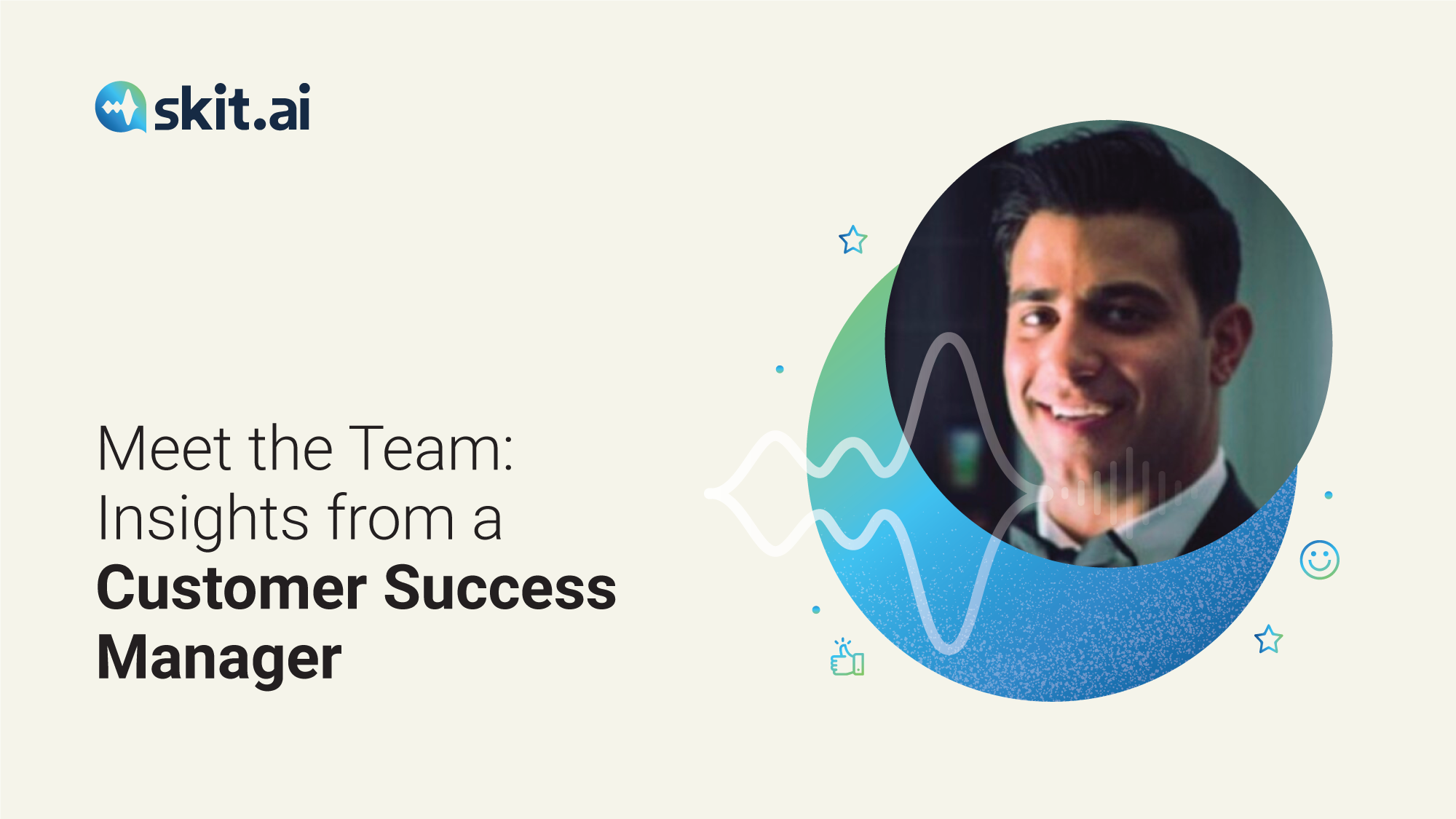For the second article of our “Meet the Team” series, we sat down with Joseph DeMarzio, one of our Customer Success Managers for the U.S. market. Joe lives in Staten Island, New York, and joined Skit.ai earlier in 2022.
Hi, Joe. Tell me a little about your professional background.
I’ve been working with start-up companies for the last seven years. I’ve specifically worked in the hospitality and travel industry, introducing a suite of tech products tailored to the hotel industry. Within the start-ups I’ve worked with, I’ve taken on many roles, including sales, customer success, technical integration, partnership development, building internal teams, and more.
What is your role at Skit.ai?
I maintain our relationships with our U.S. customers. I manage the onboarding process, product deployment, pilot testing, and KPI achievement. The overall goal of my role is to convert the pilots into long-term customers for Skit.ai; this is done by building a strong relationship. Additionally, I also work on partnership development. This includes managing discussions and integrations with third-party vendors — who help us enhance our product — and third-party sales organizations — who can help us by selling our product on our behalf.
What do you enjoy the most about working for a start-up company?
A CEO once told me that working at a start-up is like flying a plane while building it. That is very much true, as every day is a new challenge, and days are filled with both wins and losses. With that being said, the idea that my work contributes to the long-term success of the company is unrivaled. I love the fact that my input is heard and helps shape the product we are building. Start-ups also allow you to craft the company culture from the ground up. Start-ups grow at a rapid pace and thus it’s key to hire the right people also from the perspective of company culture.
What does a day in the life of a customer success manager look like?
A customer success manager’s responsibility is to bridge the gap between a client and the internal departments within the organization. A typical day starts with going through inquiries from our delivery team in terms of what is needed from the client, as we are responsible for both client onboarding and the life cycle with Skit.ai. Our job throughout the day is to understand and manage our clients’ expectations. We are responsible for keeping the client informed throughout the technical onboarding of the Digital Voice Agent. A customer success manager also focuses on the overall experience of the client through onboarding, testing, and ultimately live periods. We want the client to have financial success with our product as well as enjoy the experience of working with us along the way.
What do you think are the key factors that lead to a successful partnership with a customer?
Communication, transparency, and availability.
- Frequent communication is healthy in normal relationships as well as business relationships. There should be an open flow of communication throughout the entire life cycle.
- Transparency is key as you must always be honest with a client. If you are honest they will work with you instead of you feeling like you work for them.
- Availability in the sense that the client knows they have someone they can always talk to. The experience of working with a “real” person should never be underestimated.
Tell me a fun fact about yourself.
Just one? I have an identical twin brother, my family owns a pizzeria restaurant, I have a JD (law) degree from Touro University, and I am an avid sports fan (specifically the Jets, Nets, Yankees, and Rangers).
Do you want to learn more about Voice AI? Check out our blog.


